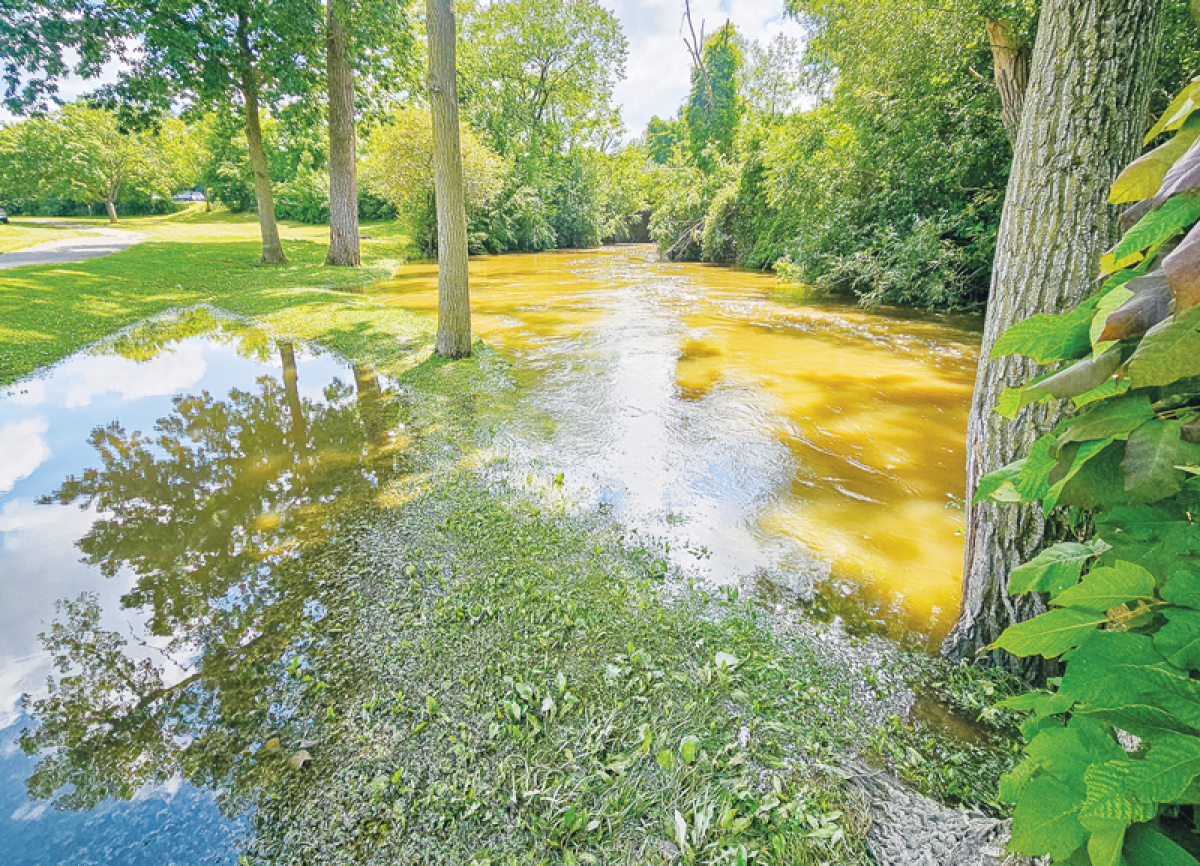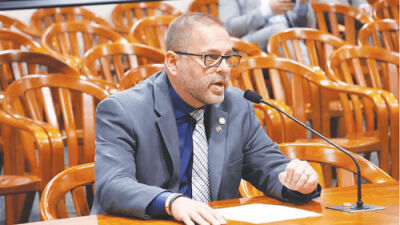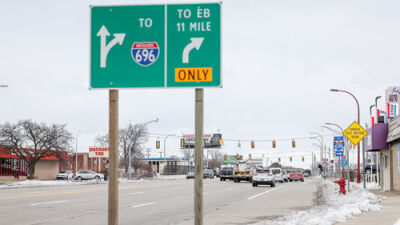METRO DETROIT — Oil spilled into the Rouge River through a storm drain last month, sparking conversations about how to keep the waterway clean.
The event happened at the Downs development site in Northville, formerly the Northville Downs Race Track, located at 301 South Center St.
According to a statement released by the city of Northville, a demolition crew’s machinery pierced several old drums holding an unknown amount of petroleum while tearing down a building on the site, causing oil and kerosene to leak onto the asphalt and enter a storm drain about 100 feet away, which then entered the Rouge River.
The historic Northville Downs closed in February 2024 after 80 years of horse racing and was the final horse racing track to close in Michigan. The groundbreaking for the 48-acre property’s mixed-use redevelopment took place May 13. Hunter Pasteur Northville LLC is the developer of the $248 million project, which will transform the former race track into 443 units of single and attached homes, apartments, luxury condominiums, parks and retail/restaurants/office spaces. Hunter Pasteur Northville LLC did not respond for comment by press time.
The Michigan Department of Environment, Great Lakes and Energy released a statement following the oil spill: “On June 21 late afternoon, we were contacted by Western Wayne Co. Hazmat Team about drums inside a building that was in the process of being demolished. As of today (6/24/24) 8 drums that had residual amounts of material and a poly-tote have been the focus of the emergency response work. The barrels released a minimal amount of products — oil-based material that has been sampled (but no results yet). The bulk of the material came from the tote. Material released to the environment is, at most, 80-85 gallons. EGLE, the Hazmat Team and Northville Fire Department responded initially, with a clean-up contractor completing the clean-up and removal of contaminated materials.”
Additionally, EGLE reported that some oil was captured by a boom placed in the Rouge River, but since then, no oil has been observed. EGLE’s other responses to the incident included using a Vactor truck to remove any standing liquid from the ground surface and to remove any liquid from four covered catch basins on the property; jetting and flushing the sewer lines, which are going to be removed; and placing containment hard boom and absorbent booms in the Rouge River near the north side of Seven Mile Road, between Northville Road and Hines Drive, as a precautionary measure.
Northville Mayor Brian Turnbull explained that all of the samples taken from the Rouge River for testing have been cleared.
“I was extremely proud of the first responders, and we had the county in and EGLE, and it got cleared within the week or week and a half,” he said.
“The good news was, geez, within 15-20 minutes we had called everybody. Hazmat was there, all the fire folks, and we contained everything. So, pretty proud of all the first responders, and we didn’t really have to do that, but we are so on edge to make sure everything is done right, and even, like, all the particulates in the air,” Turnbull said. “Asbestos, we’re about a 10th of what you can be, about 20 monitors around that, but because we’re right in the middle of town — towns on one side, there’s a sub on the other side — so, with the asbestos and dust we have to be very protective. We put down for dust calcium chloride. We have three water trucks going around there, water cannons, and we even have a dust bath that trucks come out of there and we have a cleaner going up and down.”
On June 26, the Friends of the Rouge, a nonprofit founded in 1986 to protect and restore the Rouge River, addressed Turnbull in a letter.
“This oil spill threatens the Rouge River and surrounding watershed for 30 miles downstream of the site,” states the letter. “Toxic to aquatic life, the introduction of petroleum based products into the ecosystem can lead to long-term ecological challenges,” Jessica Eiland Anders, the president of the board of directors of the Friends, stated. “This spill also poses a threat to the habitat improvement projects downstream. Millions of taxpayer dollars have been spent to restore Newburgh and Nankin Lakes and have included an accessible fishing pier and kayak launch. How will anglers and boaters who are now using these lakes respond to oil in the water and decline of the ecosystem? How will this spill affect Wilcox and Phoenix Lakes that are currently being restored as well as the numerous habitat restoration projects downstream?”
The group asked that the city of Northville investigate the oil spill and determine how it happened and what measures need to be put in place to ensure that a repeat incident does not occur during the demolition and development of the site. The Friends also called for the city to identify areas for improvement, for stricter safety standards to be implemented, and to be part of the review and remediation activities.
“It was very troubling to us that this was allowed to happen, that any amount of oil was allowed to spill, and they said it was a mix of oil and kerosene,” Sally Petrella, the monitoring manager for the Friends, said. “I’m sure there were other chemicals in there, too, because these were 55-gallon drums that had been stored at the site for who knows how long. So, I don’t know if there were any other hazardous materials. Now we’ve been told that it’s all being cleaned up and that they’re doing monitoring to test for water quality, but who knows what went into the river prior to them discovering it, and who knows what the impact for this will be long term.”
Petrella added that a big concern is that this time of year, many aquatic insects are hatching. She explained that due to their sensitivity, they might not survive the contamination, and since they’re at the bottom of the food chain, the fish will have less to eat, and what they do have to eat could be contaminated.
Petrella added that although the Friends have not received a response from Northville, the Wayne County Commission reached out. They assured the Friends that they would make sure that it was properly cleaned up and that there was no threat to human life.
“The one exciting thing about the development at Northville Downs is that they agreed to daylight the river, because the river goes underneath Northville Downs, which is terrible for the river. So it’s going to be a great project to daylight it, but we were just so surprised that now we have this damage before they even started the process,” Petrella said.
In April, the first Rouge River Watershed Report Card prepared by the University of Maryland Center for Environmental Sciences stated that the Rouge River has a D+ (36%) grade. The report card measures six different values in the watershed: water, economy, ecosystem, human health, infrastructure and recreation.
According to the Friends, they were informed about the oil spill by a Northville resident of 33 years and a Friend of the Rouge, Jeff Snyder, on June 22, who witnessed a boom placed downstream from the Downs to contain the oil. He explained that he was aware that there had been an oil spill the day before.
“I was headed out for a bike ride and I just happened to get a text from a friend that indicated someone was at the bridge outside of the site in Hines Park, and there was a boom set in there, just a small one, and that was backed up with oil. It’s no further than the next several hundred feet from my home, so I went over and looked. Sure enough, it was backed up with oil,” he said. Snyder and his friend watched as two firefighters pulled up and began examining the river. “They could see that oil had built up. Unfortunately, you could see that one side of the boom wasn’t down flat in the water, so oil was leaking around to the east side, continuing down the river.” He added that he alerted them to that situation. He said that the night before, his friend had driven by the site and witnessed the river being pumped. His friend approached with his camera, but was told not to photograph the river and that what was going on was none of his business, Snyder said.
On July 17, Snyder and other Northville residents filed a lawsuit against the city of Northville, Hunter Pasteur Northville LLC and Toll Northeast V Corp. in Wayne County Circuit Court for environmental and health concerns.
“Hunter Pasteur and the city of Northville have ignored all those requirements and statutes that require them to maintain all the dust on-site. And when I say it’s dust, it is billowing like a desert sandstorm into adjacent neighborhoods, and we don’t know what’s in it. These vehicles are driving all over these known contaminated zones, kicking up dust day in and day out,” Snyder said. “All we’re asking from them, from the city and Hunter Pasteur, is to adhere to the law. Just follow the law””
Northville City Manager George Lahanas issued a statement on the lawsuit.
“City administration has reviewed the lawsuit and is confident that our oversight of the Downs construction site is consistent with law, policy and best practices,” he stated. “The City always prioritizes the health, safety and welfare of our residents and will continue to do so. Further, the City Attorney will defend this matter vigorously. We will be offering no further comments on this item as it is pending litigation.”
For more information on the Downs Development in Northville, visit www.ci.northville.mi.us or northvilledowns.info.
For more information on the Friends of the Rouge, visit therouge.org.
To view the Rouge River’s Report Card, visit an.umces.edu/publications/rouge-river-watershed-report-card.
 Publication select ▼
Publication select ▼






















